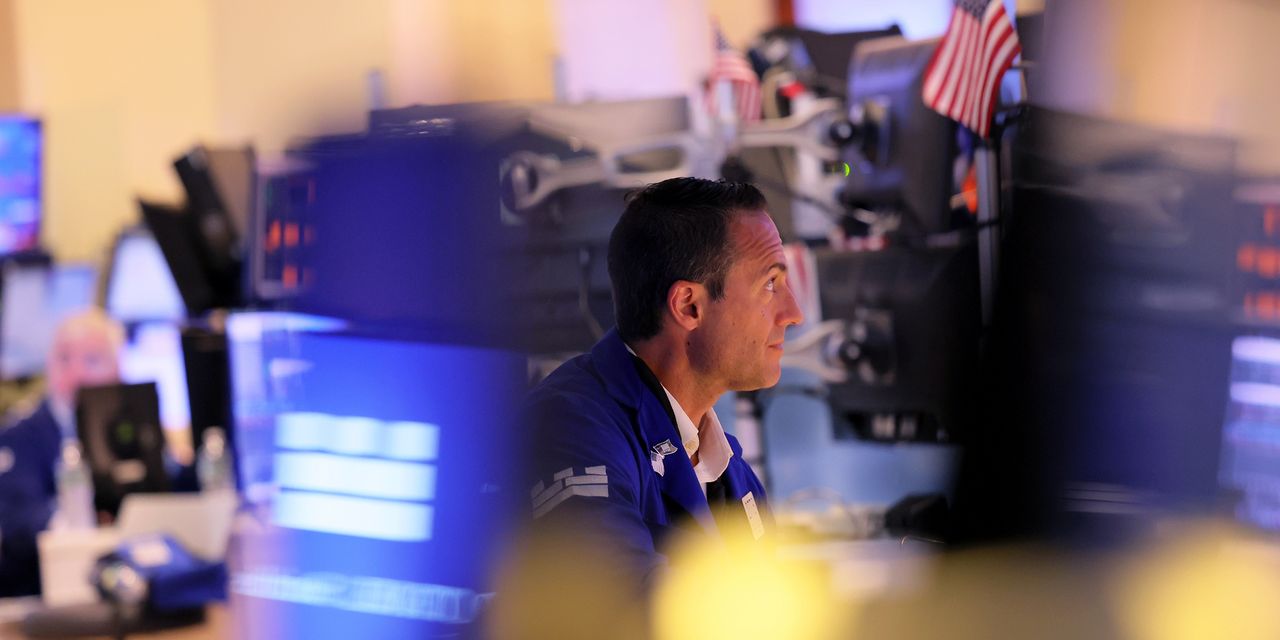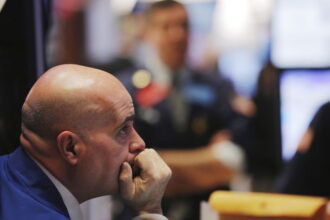We intuitively know if there is too much or too little volatility in the environment for our comfort, and everyone’s comfort level is different.
Michael M. Santiago/Getty Images
It’s quite likely that your portfolio contains an asset that you aren’t managing to the fullest. That asset is volatility.
Until recently, I didn’t believe that volatility was indeed an asset class—even when I was steeped in it during my decades as an options market maker. To be sure, volatility was a key input to almost every one of our multitudinous calculations, but I didn’t consider it to be much more than an exogenous input. The assets were the equities, futures, and options that we traded, not the volatility that influenced their prices.
My views evolved as the suite of volatility-linked products expanded, and I now prefer to think of financial assets as states of matter. Tangible assets like stocks, real estate, and commodities are solids. We can touch them, and we know what they look like. Fixed-income and money-market products are liquids. Heck, short-term fixed-income and demand deposits have been called liquid assets for generations.
Volatility is likewise a gas. Even though we can’t really see or use volatility in its purest form, it is pervasive and inescapable because the price of every asset is subject to fluctuation. Some, of course, fluctuate more than others. And if you trade options, volatility is your oxygen—it is inherent to your existence.
As with oxygen, we intuitively know if there is too much or too little volatility in the environment for our comfort—and everyone’s comfort level is different. That concept hit home recently when I was hiking in the Rockies, a sea-level dweller feeling the effects of the altitude while locals blithely zoomed up the trails. We would expect a retiree with immediate cash-flow needs to be intolerant of volatility and therefore hold liquid assets that barely fluctuate in price, while a risk-tolerant speculator would have a more aggressive mix.
The simplest way for an investor to manage volatility is to adjust one’s portfolio. Adding leverage to one’s account is perhaps the quickest way to add volatility, if a risky one, while adding short-term fixed income is a time-tested way of reducing it. But we now have a range of tools that allow us to invest in, trade, or hedge the market’s omnipresent volatility.
Of course, we need to be able to measure volatility before we can manage it. Options traders typically refer to historical and implied volatility. Both are rooted in the statistical concept of standard deviation—measuring the dispersion of a security’s returns relative to its average. Historical volatility looks backward over a given period; implied volatility is the market’s estimate of the volatility that is likely to occur in the time until an option expires. Investors who want to exploit periods of high volatility can write covered calls or puts against their positions. Those who believe the market is underestimating the potential for volatility would want to buy options, covered or not.
Those tactics work well for individual stocks and, with options on indexes and exchange-traded funds, we can use them for industry groups or the overall market. Now, thanks to an ecosystem of futures and options on the
Cboe Volatility Index,
or VIX, along with similar products like Nasdaq’s VOLQ and MIAX’s Spikes, one can hedge or speculate directly on volatility.
Although the VIX has recently recovered from recent multiyear lows, at 13.54 it is currently well below its long-term average. Those who think that traders are underpricing the potential for volatility resulting from the second-quarter earnings season and the July 25-26 Federal Reserve meeting might consider buying VIX 14.5 calls and selling 17 calls expiring on Aug. 2 for a total of 75 cents. The vertical spread would be worth $2.50 if the VIX exceeds 17—a level seen as recently as last week—on expiration.
Volatility products can be used for speculation, but they function best as asset-management tools. Remember, pure oxygen is highly combustible, just like markets. B
Steve Sosnick is the chief strategist at Interactive Brokers.
Email: [email protected]
Read the full article here










